Politics
Is PETA Today’s Most Feared Art Critic? How 4 Exhibitions Included Animal Art Without Getting Bitten
In the wake of the uproar around a Guggenhein show, we asked institutions how they had dealt with sensitivities.
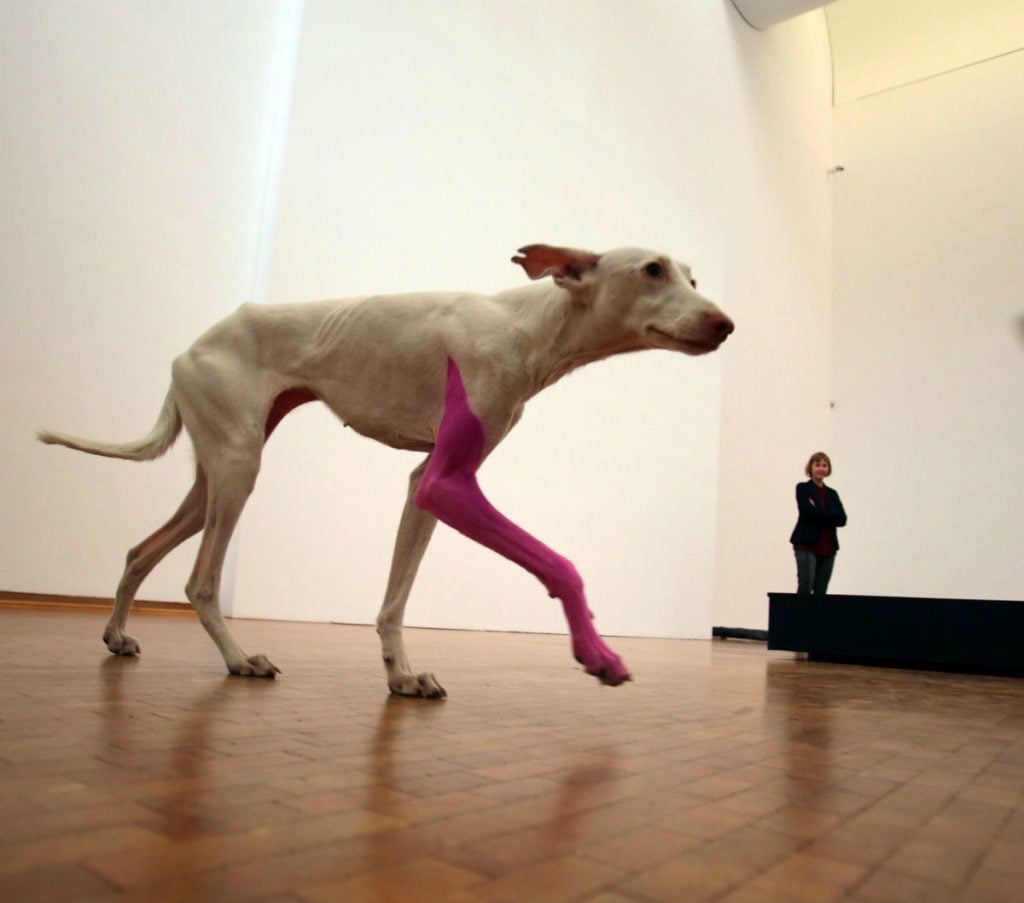
In the wake of the uproar around a Guggenhein show, we asked institutions how they had dealt with sensitivities.

Brian Boucher

The Guggenheim Museum has found itself neck-deep in a very, very public animal-rights fracas over its upcoming exhibition “Art and China After 1989: Theater of the World.” That show was to include several works deemed cruel to animals, one a video depicting pairs of dogs straining on treadmills to get at each other and fight. After a firestorm of online criticism escalated into credible threats of violence, the museum opted to strike the works from the show—an extremely rare move.
Commentators have lined up on either side: People for the Ethical Treatment of Animals (PETA) calls the works and those who enjoy them “sick”; Chinese artist Ai Weiwei calls the silencing of the artworks “tragic for a modern society.”
The repression of the works at the Guggenheim is all the more extraordinary in that the museum had thought it was ready for trouble. “We’re prepared,” the Guggenheim’s curator of Asian art, Alexandra Munroe, told artnet News’s Andrew Goldstein in an interview ahead of the show. “We are taking every precaution to avert [outcry].”
The Chinese artists in “Theater of the World” are certainly not unique among contemporary artists in employing living creatures, a type of practice that, admittedly, raises sensitive issues and requires special care. How do museums, galleries, and other exhibitors deal with these issues?
In the wake of this flame up, we have talked to two museums, a public art nonprofit, and an art dealer about recent shows that were met with concern or criticism, asking how they made sure that the ethical issues raised by live animal art were addressed, and how they prepared for the blowback.
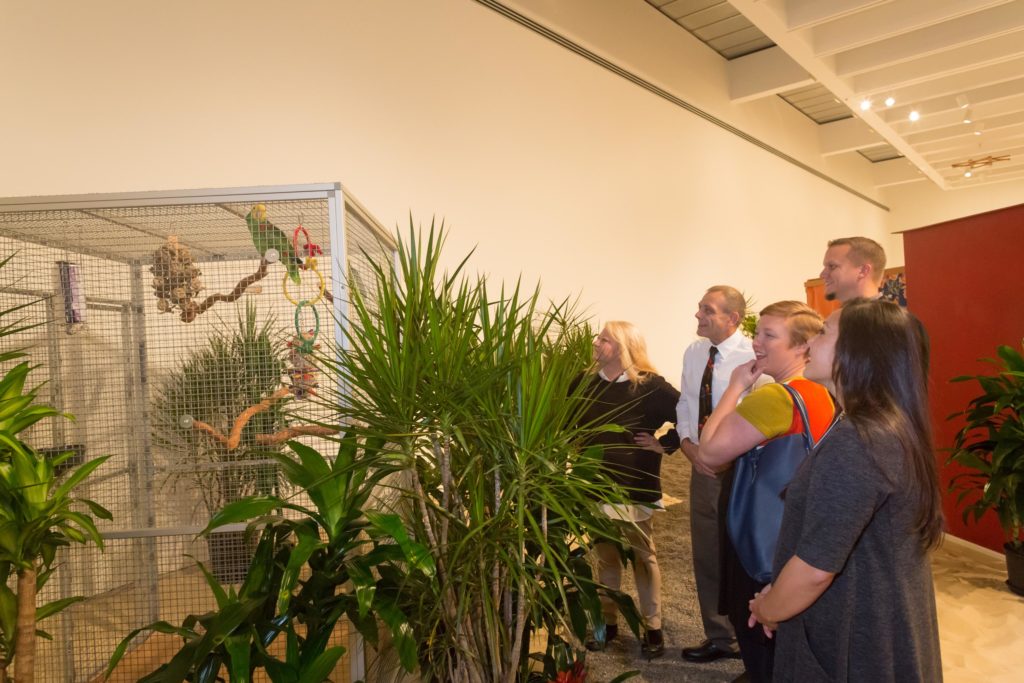
“Hélio Oiticica: To Organize Delirium,” on view at the Carnegie Museum of Art, Pittsburgh. Photo: Bryan Conley.
We start with Amazonian parrots. The Carnegie Museum of Art in Pittsburgh was one host for the touring exhibition “Hélio Oiticica: To Organize Delirium.” The show included, as part of the Brazilian artist’s seminal installation Tropicália (1967), two live examples of the birds.
Katherine Brodbeck, then the Carnegie’s associate curator (now assistant curator of contemporary art at the Dallas Museum of Art), had the pleasure of spending a fair bit of time with Amy and Rica, who were on loan from local parrot expert Kenny Sprouse, or, as his website has it, “That Guy with the Birds.”
The museum had the National Aviary, also in Pittsburgh, as a nearby resource. Its experts were brought in to train museum staff. “They helped set up the birds’ enclosure, situated papier-mâché toys for them to play with, and taught us about parrot behavior,” Brodbeck said in a phone interview.
Many visitors were inspired to make donations to bird rescuers during the show, Brodbeck said, after being charmed by the animals, who, she pointed out, have something like the intelligence level of human toddlers. They also can live to be 70 years old, and people frequently abandon them, unwilling to make a lifetime commitment once they realize that the birds are loud.
“They’re good at language and rhythm, and they like bright colors,” Brodbeck said. “They like to watch iPads, so I was happy that there was a video projection situated right near them.”
These birds in particular didn’t talk much, Brodbeck said, though Rica did like to sing the opening melody of “The Immigrant Song.” “I think Kenny is a Led Zeppelin fan,” she said.
Fortunately, protests didn’t materialize; the show is currently on view in New York, at the Whitney Museum of American Art, where it has gone “without incident,” according to a press representative.
At the Carnegie, the experience seems to have been as positive for the staff as for the birds.
“I miss them so much!” said Brodbeck.
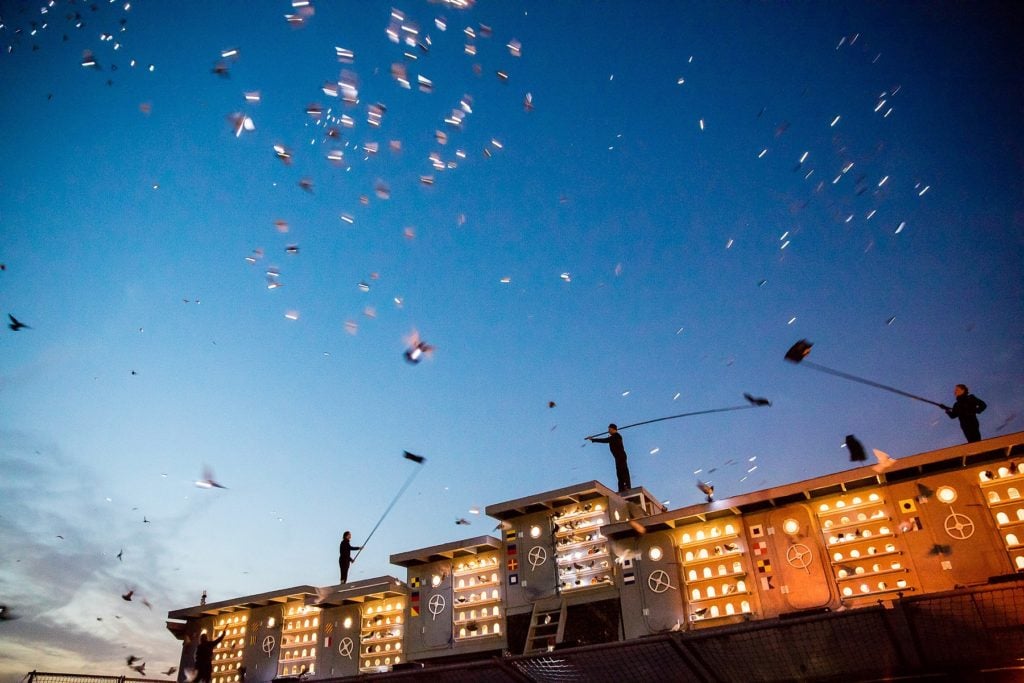
Duke Riley, Fly by Night, 2016. Photo Tod Seelie, courtesy Creative Time.
A more sensitive instance of a bird-based art show was New York artist Duke Riley’s Fly By Night (2016), which incorporated a flock of pigeons flying in the evening sky over Brooklyn’s Navy Yard, each with a small LED light affixed to its leg. Here, again, the organizer, the nonprofit Creative Time, consulted with experts ahead of time about the health of the birds, who, for the duration, lived in a large coop atop a decommissioned military craft.
Rita McMahon, director of the Wild Bird Fund, which rehabilitates sick and injured birds, weighed in ahead of time on an FAQ page for the project: “Fly By Night will have a transformative effect on avian welfare by helping us see that the life in the sky—from the under-appreciated pigeon to migratory marathoners—is one of nature’s superb art forms, one we can cherish every day just by looking up.”
Creative Time spared no effort to avert commotion over the project. The organization consulted pigeon clubs and animal welfare groups. An avian veterinarian set up protocols for the keeping of the animals, explains the FAQ page, which also points out that “[a]n animal advocacy monitor was on hand for all performances.” What’s more, Creative Time attained an animal exhibition permit from the Animal Affairs Division of the city’s Department of Health and Mental Hygiene, accompanied by certificates of the flock’s health.
Despite these measures, there were protests. Close to 7,500 people signed a Change.org petition decrying the work as cruel, and a handful were mobilized by the Animal Cruelty Exposure Fund outside of the Navy Yard to protest. The dust up made the pages of the New York Times. One demonstrator, concerned about the risks of the birds’ flight above the water, carried a sign that read “Birds Can Drown.”
Counter-protesters mobilized by the artist toted slyly humorous signs, essentially mocking his critics: “Where Is Duke Riley’s Birth Certificate?” read one; another, “Duke Shot Tupac.”
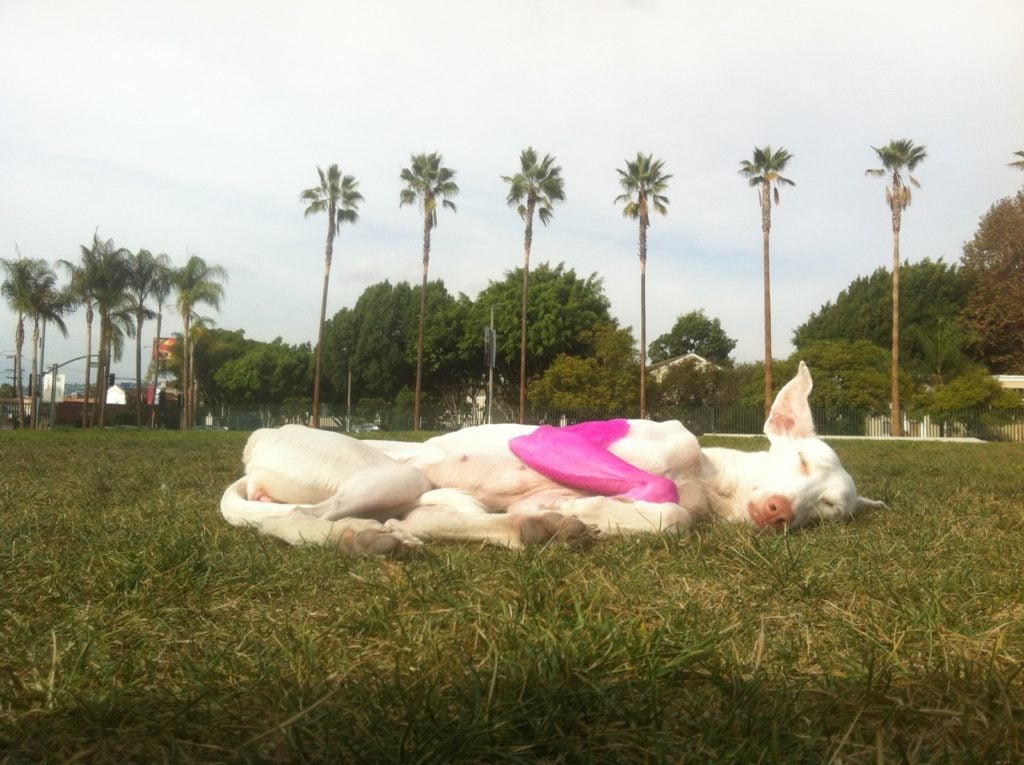
Pierre Huyghe’s Human at the Los Angeles County Museum of Art. Courtesy of the museum.
Dogs present a much more sensitive subject than birds, as the Guggenheim learned.
French artist Pierre Huyghe’s self-titled exhibition, which came to the Los Angeles County Museum of Art (LACMA) in 2014, included an Ibizan hound named Human, on display as an artwork, wandering freely about the galleries.
LACMA was proactive. The museum publicized the fact that the Los Angeles Department of Animal Services and the city’s branch of the Society for the Prevention of Cruelty to Animals had signed off on the animal’s “excellent health.”
Some visitors were concerned all the same.
“There were a few people saying, ‘It looks so skinny! It’s not being treated well!'” the museum’s senior director of communications, Miranda Carroll, recalled. “But that’s what they look like. They are a bit like greyhounds, with a very skinny frame, and even when healthy, they may look malnourished.”
The museum was concerned enough with visitors’ reaction that it published information on its blog and placed museum staff at the entrance to the show with handouts to address possible concerns. The blog post pointed out that Human was a rescue; that the animal’s protruding breastbone and ribs are right in line with the American Kennel Club’s description; and that Human had a private resting area and went home each night with her handler.
Apart from concerns about the dog’s welfare, Carroll said, there was an unforeseen administrative challenge.
“What we didn’t anticipate,” she said, “was having to have a permit from the city for the dog to be a performer.”
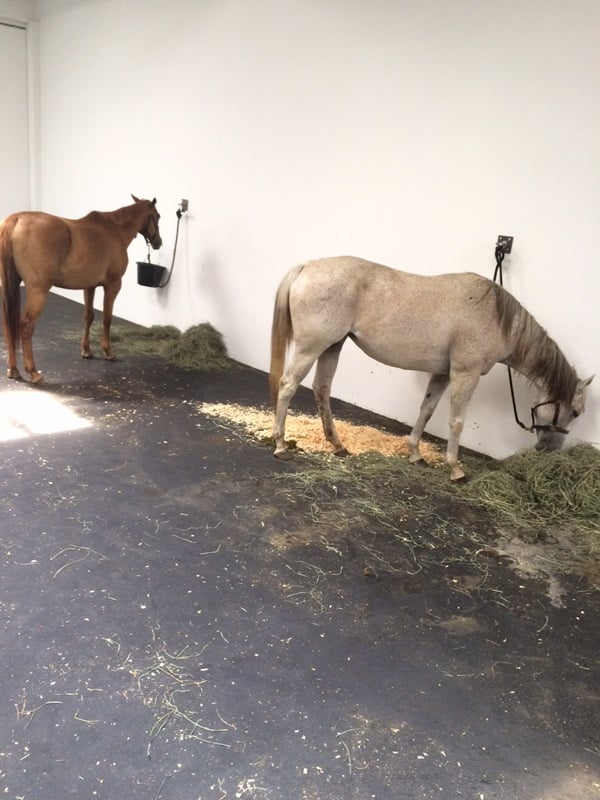
Jannis Kounellis’s Untitled (12 Horses) (1969/2015).
When New York dealer Gavin Brown wound down his West Village venue (he still has two New York galleries and one in Rome), the space went out with a bang. For the venue’s swan song, Brown worked with Jannis Kounellis to restage his 1969 work Untitled (12 Horses), in which a dozen horses munched on hay and stood around on a rubberized floor.
“It’s not art, it’s animal abuse,” read a sign by one protester who showed up at the opening. Another sign dubbed the work “Modern Slavery.”
While he brought in professionals to mind the animals, Brown took considerably fewer measures than the museums to head off grievances.
“I did not work to tamp down complaints,” he said in an email. “These were domesticated animals and the conditions in the gallery were more pleasant (AC, no flies, rubber floor) than in their usual stables—and there was nothing wrong with their stables. So there was nothing to complain about in terms of their treatment.”
Brown think that the criticism had less to do with human relationships with animals and more to do with protesters’ feelings toward other bipeds.
“When the protesters came,” he said, “I understood that the objections were uninformed but also more about the ethics of looking at an animal for our enjoyment. Ultimately it felt like they were using these animals as a platform from which to look down on their fellow human beings. It was all about maintaining a moral superiority. The horses were very happy.”
Even as someone who had been the target of protests himself, however, Brown is not standing with the Guggenheim as the museum faces its own animal-art controversy.
“As to dogs being made to fight on treadmills,” he said, “that’s depressing and horrible.”